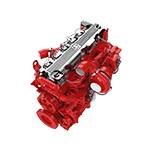Jul . 27, 2024 03:15 Back to list
Comprehensive Guide to Brake Drum Maintenance and Equipment Recommendations for Optimal Performance
Understanding Brake Drums and Equipment Their Importance in Automotive Safety and Performance
Brake systems are an essential component of any vehicle, responsible for ensuring optimal safety and control while on the road. Among the various components that make up these systems, brake drums and associated equipment play a crucial role. This article delves into the significance of brake drums, their operation, and the equipment that supports their functionality.
What are Brake Drums?
Brake drums are cylindrical components that form a vital part of drum brake systems. Typically made of cast iron or aluminum, these drums are attached to the wheel assembly. When the driver applies the brakes, the brake shoes expand outward against the inner surface of the drum. This friction slows down the vehicle by converting kinetic energy into thermal energy. The design of the drum brake allows for efficient stopping power, making it a reliable choice for various vehicles, including cars, trucks, and buses.
The Mechanics of Operation
When the brake pedal is pressed, hydraulic pressure from the brake fluid forces the brake shoes against the inner surface of the brake drum. This action creates friction, which slows the wheel’s rotation. An essential aspect of this system is the adjustment mechanism, which ensures that the brake shoes maintain an optimal distance from the drum surface, thus enhancing performance and extending the lifecycle of the components.
One of the key advantages of brake drum systems is their ability to dissipate heat. As the brakes are applied, some heat is generated due to friction. Brake drums are designed to dissipate this heat efficiently, preventing overheating that can lead to brake fade and reduced effectiveness. However, like all mechanical components, brake drums require regular maintenance to ensure their longevity and functionality.
Maintenance of Brake Drums
brake drum & equipment

Regular inspection and maintenance of brake drums are paramount for ensuring vehicle safety. Signs of wear, such as grooves, cracks, or discoloration, can indicate that the drum needs to be replaced. Additionally, the brake shoes should be examined for wear since uneven wear can lead to decreased braking efficiency.
Cleaning the brake drums is also essential, as dust and debris can accumulate, which may affect performance. Mechanics often recommend resurfacing the drums when they show signs of wear but are still structurally sound. This process smooths the drum’s surface, providing a better contact area for the brake shoes, ultimately improving braking performance.
Accessories and Equipment for Brake Drums
To ensure optimal performance, several accessories and equipment are crucial for the effective functioning of brake drums. Brake lining materials, including organic, semi-metallic, and ceramic options, offer various properties suited for different driving conditions. Additionally, a proper installation kit, including springs, retainers, and adjusters, can enhance the efficiency and longevity of the brake system.
Moreover, many vehicle manufacturers incorporate advanced technologies, such as anti-lock braking systems (ABS), which work in conjunction with traditional drum brakes. ABS prevents wheel lock-up during hard braking, helping drivers maintain steering control, which is essential for avoiding collisions.
Conclusion
Brake drums and their accompanying equipment play an indispensable role in vehicle safety and performance. Understanding how these components function and the importance of regular maintenance can significantly enhance braking effectiveness, providing confidence to drivers and ensuring safety on the roads. By prioritizing the health of your brake systems, you not only extend their service life but also contribute to overall vehicle reliability. Always consult with professionals to ensure your braking system is in optimal condition, allowing for a safe and enjoyable driving experience.
-
Scania Brake Drums: OEM Quality for Optimal Safety & Durability
NewsAug.16,2025
-
R.V.I: Advanced Remote Visual Inspection for Precision
NewsAug.15,2025
-
Discover HYUNDA: Innovative Vehicles, Equipment & Solutions
NewsAug.14,2025
-
R.V.I: Unlock Advanced Insights & Real-time Performance
NewsAug.13,2025
-
Kamaz Brake Drum: Durable & Reliable for Heavy Duty Trucks
NewsAug.12,2025
-
Heavy Duty Iveco Brake Drum - Premium Quality & Safety
NewsAug.11,2025
